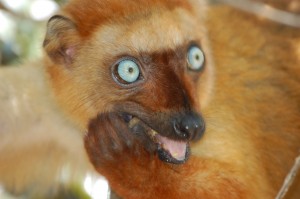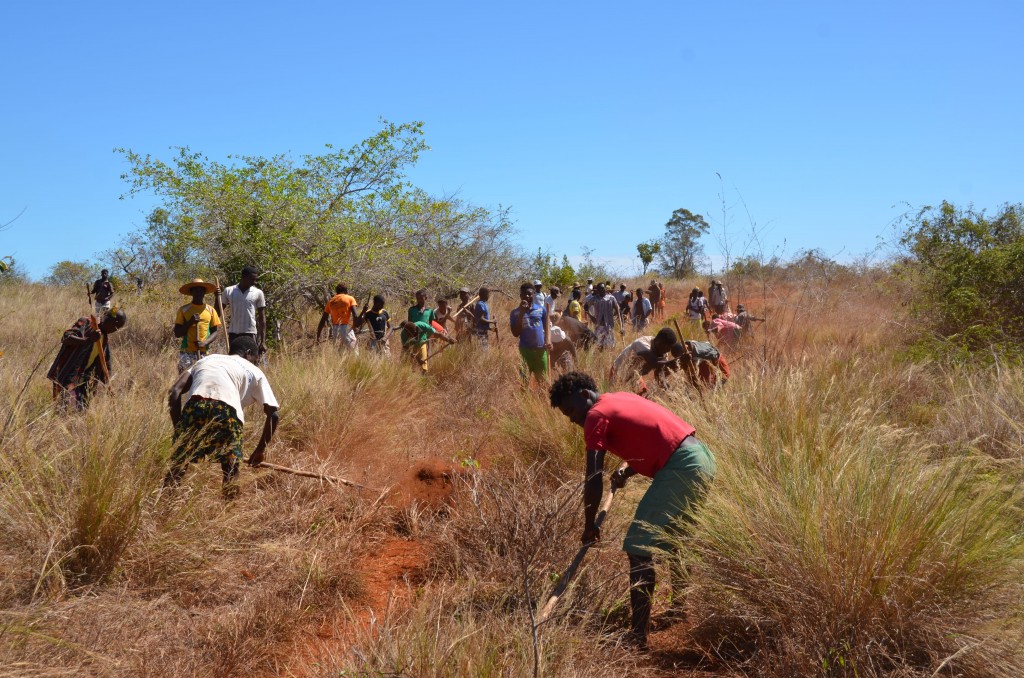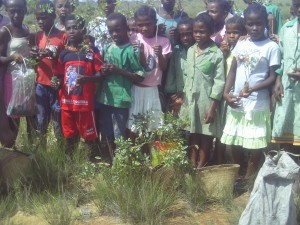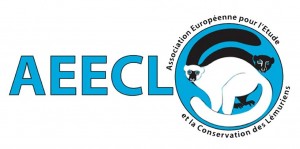What We Do

The Lemur Conservation Association (AEECL) focuses conservation efforts in northwest Madagascar through innovative capacity building, community outreach, and on-the-ground research programs. We have been conducting community-based conservation programs on the Sahamalaza Peninsula since 2000.
We support lemur conservation by maintaining and strengthening natural habitat and improving how that habitat is used by humans. Additionally, AEECL advances the understanding and conservation of Madagascar’s lemurs through scientific research and captive breeding.
How We Protect Lemurs And Other Wildlife
Reforestation
We work with local communities to conduct community-based reforestation. AEECL’s programs planted over 111,000 trees around 14 villages in 2013 alone, involving local schools. Once the trees are planted, an association of gardeners monitors the survival of saplings and re-plants trees if necessary.

Patrolling Forests
We work with six local park committees to help patrol the forests in the national park. In 2013, these local park controls completed 300 patrol days.
Protecting Forests From Wildfires
Lastly, we work with local partners to organize community volunteers to build a 7 kilometer-long firebreak to protect the forest from the spread of wild fires. The community turn-out for yearly construction of the firebreak is extremely large—larger than many other community events in the region.
What Lemur Species We Protect
AEECL is heavily focused on the Sahamalaza Peninsula which is home to several lemur species, including:
- Blue-eyed black lemur (Eulemur flavifrons)
- Sahamalaza sportive lemur (Lepilemur sahamalazensis)
How We Support Local Communities
We see community collaboration as key to supporting and protecting the wildlife and habitat within the Sahamalaza National Park.

Eco-tourism
Since 2013, we’ve been working with local communities to increase local capacity to accommodate tourists by building several key facilities, including housing and solar paneling.
In addition, we train members of the local community to become tourist guides. We also created a guide association, which advocates for the guides and organizes tourist group visits. Guide training helps local community members improve their french and increase their knowledge of the local ecosystem and lemur species, thus helping them to become ambassadors for Madagascar’s environment.
Social Development
We have been working in education outreach since 2012, including much-needed school construction and renovation programs which impacted thirteen schools in the perimeter of the Sahamalaza National Park. We also subsidize the salaries of 60 school teachers, impacting over 2,000 students.
We have improved sanitation, hygiene, and health through the construction of six water wells in the surrounding communities. The construction of these wells is extremely important because water shortages have become increasingly common.

Environmental Outreach
We also work on a variety of local environmental awareness initiatives, organizing activities for World Environment Day and the World Lemur Festival. Activities are planned to increase environmental awareness, including parades, speeches, radio quizzes, sports events, and community dance events.
We help fund and organize the Lampogno Festival, a fun 4-day event about how food availability and habitat conservation are connected using films, children’s activities, speeches, and even a song contest.

